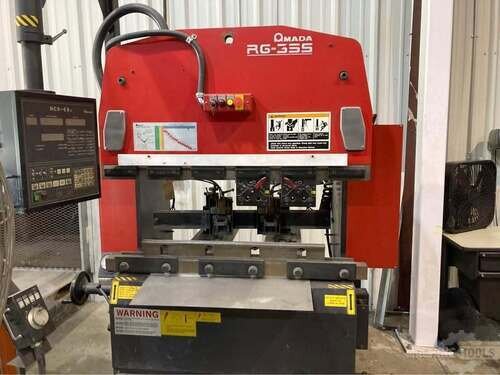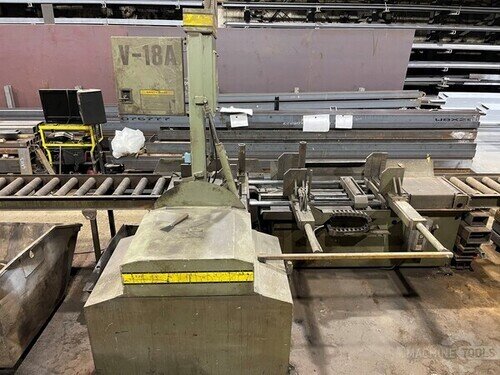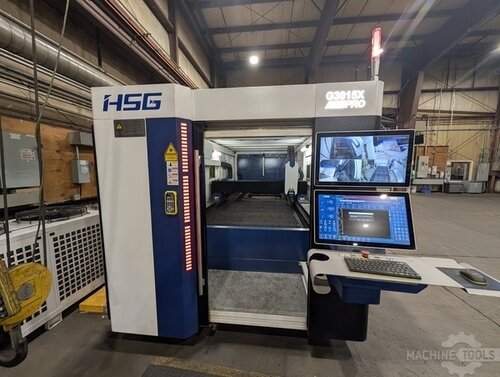I’ve always believed that strong partnerships drive exceptional results. In my role as VP of Sales at Mac-Tech, I’ve had the privilege of guiding clients toward the most advanced and impactful solutions from LVD. Connecting with each customer, understanding their challenges, and helping them achieve their goals is what motivates me every day. My commitment to building relationships, customizing strategies, and ensuring ongoing satisfaction has been the backbone of my approach to sales—and I’m proud of how it continues to shape our mutual success stories.
In my experience, the best sales encounters begin with active listening. From the moment I meet a new client, I seek to fully understand their needs by asking in-depth questions about their existing processes, future objectives, and any pain points they’re hoping to alleviate. This first step helps me set the tone for a supportive, consultative environment where we can both share insights and create a truly collaborative path forward.
Building Trust with Every Client Collaboration
Building trust means walking alongside each customer, not just handing them a product pitch. In all my years with Mac-Tech, I’ve learned that trust is earned by being consistently transparent, empathetic, and attentive to each project’s unique requirements. I share real examples from my past experiences—both successes and lessons learned—to illustrate how LVD’s solutions have helped other businesses thrive.
I encourage open discussions about potential trade-offs, long-term benefits, and overall return on investment. Customers appreciate honesty above all, and I go out of my way to ensure they feel fully informed, whether it’s about implementation timelines or total cost of ownership. This kind of candor sets a solid foundation for our working relationship.
Ultimately, I know that strong partnerships are built on two-way communication. By explaining exactly how LVD’s range of sheet metal equipment can address a customer’s specific challenges, I bring them into the decision-making process. My goal is to make sure they walk away knowing that I have their back—and that no question is ever too small or complex to explore.
VENTBOSS G120
Tailoring LVD’s Solutions to Unique Customer Goals
Every manufacturing environment is different, and that’s why a good solution starts with understanding. I begin by conducting a thorough assessment of each client’s production floor. This includes evaluating existing processes, manpower, and efficiency levels to pinpoint exactly where LVD’s expertise can have the greatest impact.
From there, I tap into my extensive experience working with LVD’s advanced automation and precision fabrication technologies to propose a tailored suite of solutions. For some clients, that might involve a high-performance laser cutting machine equipped with automation tools, while others might benefit from the precision and flexibility of a press brake with intelligent bending controls. It’s about finding the perfect fit rather than pushing a standard product.
By the time we finalize our recommendations together, the client knows exactly why those choices were made and how each piece will integrate into the larger workflow. We create a clear roadmap for implementation, ensuring everyone is on the same page. Customizing solutions around unique objectives is what truly sets our approach apart and drives long-term value.
My Consultative Process for Superior Sheet Metal Outcomes
My process begins with creating a comfortable space for clients to talk about their business goals and concerns. Once I have a full picture, I outline a comprehensive solution plan that weaves together LVD’s cutting-edge technology and my deep familiarity with automation and precision fabrication. We discuss everything from capacity requirements to the possibility of scaling up as their business grows.
Next, I work side by side with our engineering and support teams to validate every detail of the proposed solution. Whether we’re optimizing production flows or integrating automation modules, I make sure the client feels included in each step. This consultative back-and-forth ensures we’re continuously recalibrating to meet their exact specifications.
Once the client gives the green light, we move into the installation and training phase. I remain actively involved, from managing timelines to handling any unexpected challenges, so that the process runs smoothly. I don’t consider my job complete until the client is confident and comfortable with their new LVD equipment.
Ensuring Long-Term Satisfaction with Every LVD Project
Customer satisfaction doesn’t end at delivery—it’s an ongoing, mutually beneficial relationship. With LVD’s advanced sheet metal solutions, I often schedule follow-up consultations to monitor performance and see if any adjustments are needed. By proactively reaching out, I can ensure the systems continue to operate at peak efficiency.
I also make it a point to stay in contact as our clients’ businesses evolve. Production demands shift, new product lines are introduced, or expansion goals require different functionalities. My role is to keep them informed about the latest LVD advancements that can help drive further success, whether through automated bending solutions or new laser cutting technologies.
Ultimately, my motivation is the customer’s happiness. When a client sees measurable improvements in productivity, accuracy, or overall ROI, it confirms that the efforts we invested were worthwhile. I’m proud to be part of those achievements, and I strive to maintain a supportive relationship long after the initial project wraps up.
FAQ
1. How do I know if my facility is ready for LVD automation?
I start by assessing your current workflow and production outputs to identify any inefficiencies. From there, I’ll present a clear integration roadmap showing how LVD’s automation can enhance your capacity and productivity.
2. Will I need specialized training for my team?
Absolutely. As part of our collaboration, I facilitate comprehensive on-site or virtual training sessions tailored to your team’s experience level. This ensures everyone is up to speed on best practices for operating and maintaining your new equipment.
3. What if I’m not sure which LVD solution fits my unique requirements?
That’s where my consultative approach helps. By discussing your production goals and challenges, we’ll narrow down the most suitable equipment configuration for your specific needs.
4. How long does it take to see ROI after implementing LVD machinery?
The timeline varies by project size and complexity, but many clients notice significant improvements in efficiency and throughput within just a few months of implementation.
5. Can LVD solutions integrate with existing machinery?
Yes. LVD systems are designed with flexibility in mind, and I collaborate with our technical team to ensure seamless integration with your current setup.
6. Do you offer ongoing support after installation?
I maintain close contact with every client, offering continued guidance and support. Our team is always available for service, troubleshooting, and new feature rollouts.
My goal is to help you elevate your production process with the latest sheet metal technology while forging a long-lasting partnership. I’m personally invested in your success, and I’d love the chance to discuss how LVD’s solutions could propel your operations forward. Thank you for reading, and I look forward to hearing from you soon.
Get Weekly Mac-Tech News & Updates








